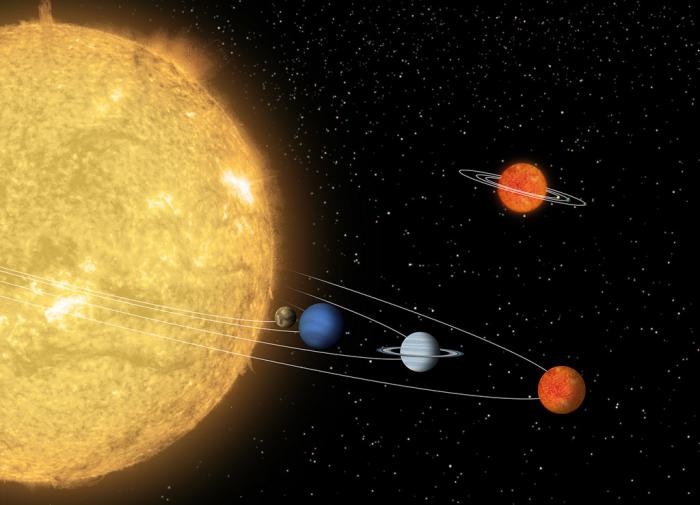4:34
06.10.2023 22:22
Researchers may have discovered several new large objects beyond the Kuiper Belt. which indicates that there is more matter in the solar system than we thought. This could even indicate the possible existence of a “second Kuiper belt.”

Photo: openverse
The Sun’s gravitational influence extends much further, which covers the eight planets orbiting our star. Beyond the orbit of Neptune, the Solar System extends to approximately 100 astronomical units (AU), which is 100 times the distance between the Earth and the Sun. By comparison, the most distant planet in our solar system, Neptune, is approximately 30 AU away. e. from the Sun.
Outside the heliopause, which is the edge of the solar system, lies the Oort Cloud – a reservoir of comets and asteroids that are practically not subject to the gravitational influence of the Sun, and it extends to at least 1000 AU. that is, from the Sun, perhaps even further.
However, most of the large objects located beyond the orbit of Neptune are concentrated in the Kuiper belt, which is located at a distance of 30 to 50 astronomical units from the Sun. Among the famous objects in the belt Kuiper includes, for example, the dwarf planet Pluto and the object Arrokoth, which has become the most distantly studied spacecraft. There is also a theoretical hypothesis about the existence of a ninth planet in the Kuiper belt.
So far, very few large objects have been discovered outside the Kuiper Belt in the Solar System.
Researchers have announced the possible discovery 12 potentially large objects, located at a distance of about 60 a. e. from the Sun, while searching for new potential targets for NASA’s spacecraft called “New Horizons”. This device has previously studied Pluto and Arrokoth, and is currently located at a distance of about 57 AU. That is, from the Sun and moves towards the heliopause. Artificial intelligence was used to analyze the data, which made it possible to quickly process information received from the Subaru telescope on the Hawaiian volcano Mauna Kea. The findings were presented at the 54th Lunar and Planetary Science Conference in Houston, Texas, in March. (However, the results of this work have not yet been peer-reviewed or published.)
These findings did not surprise the researchers., since compared to other star systems, our Solar System is relatively small. Newly discovered objects suggest the solar system is more massive, consistent with what astronomers know about other star systems.
Results could also confirm data collected by the New Horizons spacecraft, which is constantly exposed to cosmic dust as it travels through space.
“The simplest explanation for this is that there are many undiscovered objects,” study co-author Alan Sternprincipal investigator for the New Horizons mission.
Distance 10 a. i.e. between the Kuiper belt and recently discovered objects also may indicate the presence of more massive objects, which may be further away, forming the so-called “second Kuiper belt”. This second Kuiper Belt may be hiding unknown objects that have remained invisible until now.
“The possible existence of a new Kuiper Belt is an exciting discovery. The question of why these objects were not previously discovered remains an open question, but the chances of its presence are high,” says the leader of the study. Pedro Bernardinelli.
Currently The researchers are analyzing more recent data and hoping it will confirm their findings. If unsuccessful, there is a possibility that the New Horizons spacecraft could detect these objects after extending its current mission until 2029.